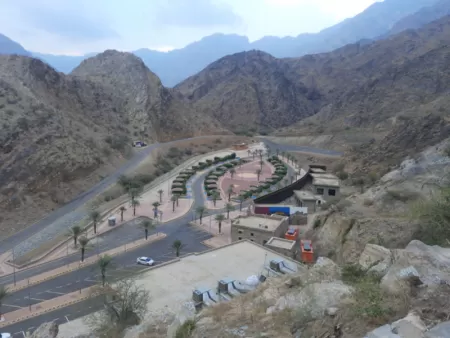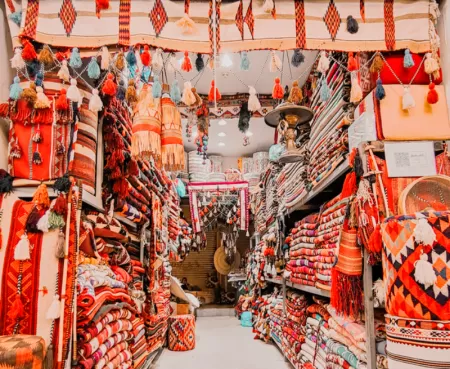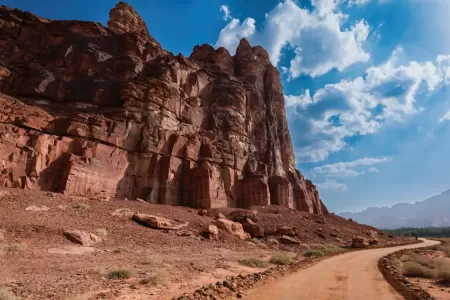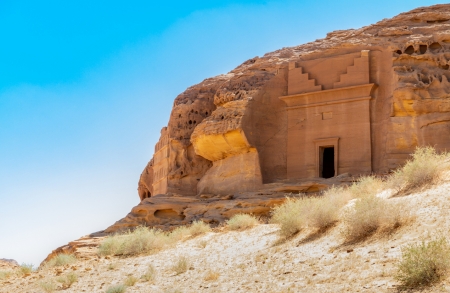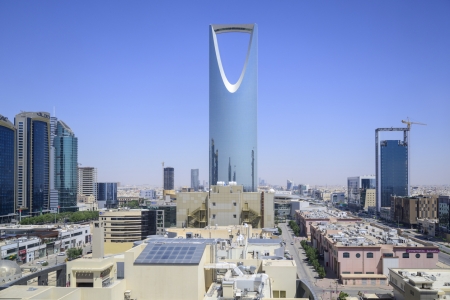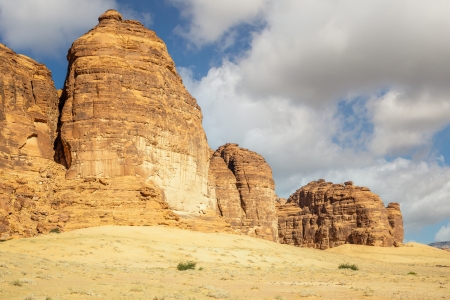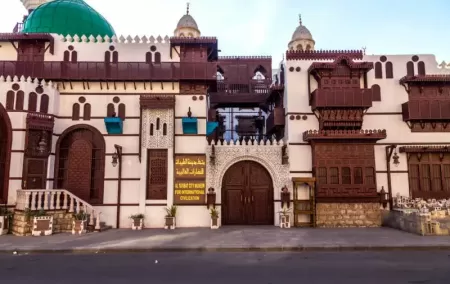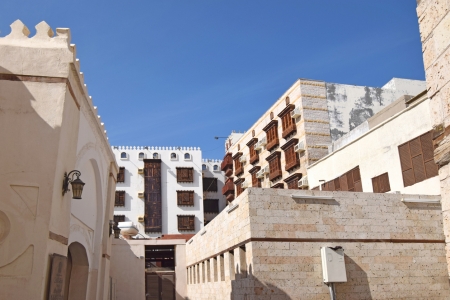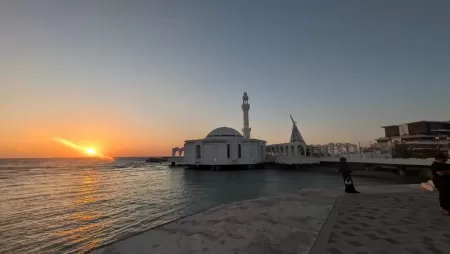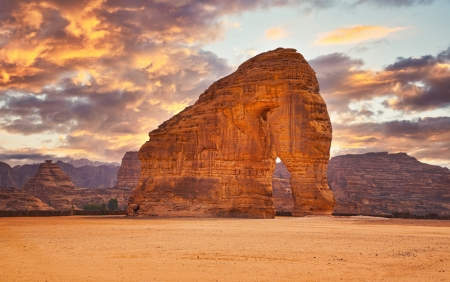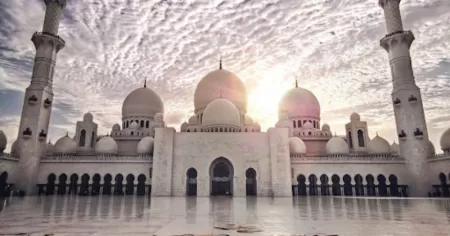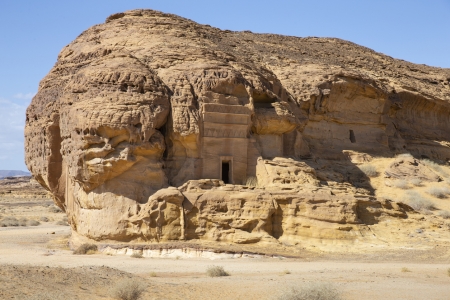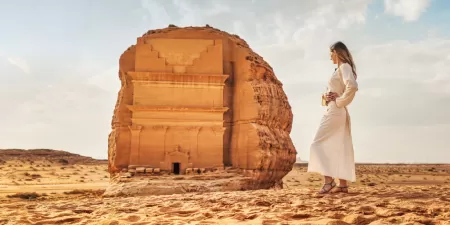Where 300M Roses Bloom: Your Taif Adventure Guide
Taif, Saudi Arabia's "City of Roses" in the Hijaz Mountains, is a unique summer capital. Discover its vast rose farms, ancient Souq Okaz, rich culture, and stunning mountain scenery for an unforgettable Arabian experience.

High above the Arabian Peninsula, at precisely 1,879 meters elevation within the Hijaz Mountains, Taif emerges as one of Saudi Arabia's most elevated urban centers. The city bears an enchanting Arabic title—"Madīnat al-Wurūd"—which translates to "City of the Roses," a designation that becomes remarkably clear when you consider the staggering agricultural feat occurring within its boundaries.
More than 900 dedicated rose farms flourish across Taif's mountainous terrain, yielding an extraordinary harvest of over 300 million individual blossoms each year. Yet these fragrant petals serve a purpose far beyond mere aesthetic pleasure. Each carefully cultivated flower contributes to the creation of what connoisseurs recognize as the world's most precious rose oil. The mathematics behind this liquid treasure reveals its exceptional nature: a single 11-gram bottle demands approximately 40,000 individual rose flowers for its production.
The city's 563,282 inhabitants have witnessed their home earn recognition as Saudi Arabia's unofficial summer capital, a distinction rooted in the moderate climate that provides welcome relief from the kingdom's typically intense temperatures. This pleasant mountain weather represents just one facet of Taif's multidimensional character.
Ancient history mingles with agricultural abundance throughout the city's landscape. Souq 'Okaz has served as a significant cultural gathering point since at least 500 AD, while the fertile mountain soil produces exceptional grapes, pomegranates, figs, and honey that have gained renown throughout the region. Taif presents visitors with an intriguing blend where natural splendor, deep-rooted cultural heritage, and contemporary conveniences converge, creating a destination that rewards thorough exploration and discovery.
The Journey to Taif: First Impressions
Few approaches to a destination prove as spectacular as the route connecting Jeddah's coastal plains to Taif's mountain sanctuary. This remarkable journey unfolds across 101.9 miles, requiring approximately 1 hour and 49 minutes, yet the experience transcends mere transportation—it becomes a gradual ascent into an entirely different world.
Driving through the mountains from Jeddah
Departing Jeddah's familiar coastal landscape, travelers witness a fascinating geographical transition. The flat expanses gradually yield to rising terrain as the majestic Sarawat Mountains materialize on the eastern horizon. This transformation reaches its crescendo upon encountering Al Hada Road, designated as Route 15—an engineering marvel carved into the mountainside.
Al Hada Road presents drivers with 93 precisely engineered curves that navigate a dramatic elevation gain of 6,500 feet across just 21 kilometers. Each switchback reveals new panoramic vistas, creating a sequence of natural viewing galleries suspended above the landscape below.
The mountain ascent delivers unexpected encounters that enhance the journey's appeal:
- Misty conditions occasionally envelop higher elevations, where temperatures drop to a refreshing 20°C
- Baboon colonies inhabit the rocky slopes, creating popular photography stops for curious travelers
- Local fruit vendors establish seasonal markets along the descent route, offering fresh mountain-grown produce
Why is Taif called the City of Roses
The designation "Madīnat al-Wurūd" stems from botanical history stretching back centuries. Historical accounts suggest Ottoman Turks introduced the precious wardh Taifi (Rosa x damascena) during the 16th century, establishing what would become an agricultural legacy spanning generations.
Each spring, typically throughout April, these remarkable 30-petal roses undergo their annual blooming cycle across hundreds of cultivated farms. The timing proves crucial—harvesters begin their work at dawn when essential oils reach peak concentration within the delicate petals.
Following harvest, specialized distilleries transform these aromatic treasures into rose water and the coveted rose oil known locally as 'uttur. The resulting products have achieved international recognition, finding their way into luxury fragrances including Carolina Herrera's Oud Couture and Givenchy's Very Irresistible. This botanical heritage continues to define Taif's identity and economic significance within the kingdom.
A summer escape in Saudi Arabia
Taif's elevation advantage creates a microclimate that distinguishes it dramatically from surrounding regions. While lower-altitude cities endure scorching temperatures, Taif maintains a Mediterranean-style climate pattern. January temperatures average around 20°C, rising to a manageable 32°C during July's peak summer period.
This climatic blessing has secured Taif's recognition as Saudi Arabia's unofficial "Summer Capital". The combination of cooler mountain air, verdant orchards, and rose-perfumed breezes attracts visitors seeking respite from the peninsula's intense heat. Green landscapes flourish where desert conditions typically prevail, creating an oasis atmosphere that provides both physical comfort and visual relief for residents and travelers alike.

Exploring the Culture and Heritage
The cultural fabric of Taif weaves together centuries of Arabian intellectual tradition, creating a rich tapestry that extends far beyond the city's botanical fame. Each corner of this mountain settlement holds stories of poetry competitions, rhythmic dances, and royal residences that have shaped the cultural identity of the region.
Souq Okaz and the legacy of poetry
Souq Okaz carries the distinction of existing since 501 A.D., establishing itself as a cornerstone of Taif's intellectual heritage. This remarkable marketplace functioned as the Arabian Peninsula's largest trade and cultural fair, where tribal leaders, merchants, and poets would converge for precisely 20 days each year during Dhu al-Qa'dah. The Saudi government recognized the cultural significance of this ancient gathering place and revitalized it in 2007 as the Souq Okaz Festival, which now draws thousands of visitors annually.
Classical Arabic poetry takes center stage at this festival through prestigious competitions, including the coveted "Poet of Okaz" award. The depth of poetic tradition in Taif's identity became officially recognized in 2022 when the city received the designation "Capital of Arabic Poetry". The Academy of Arabic Poetry at Taif University continues nurturing this literary heritage through specialized programs and cultural events.
Traditional dances and festivals
Among Taif's most distinctive cultural expressions, the Majrour dance stands as a defining artistic tradition. This ancient performance art has become so closely associated with the region that it earned the specific moniker "Taif's Majrour". The dance requires troupes of 15-20 performers who arrange themselves in opposing rows, donning traditional white "Al-Hawisi" garments while moving in rhythmic harmony to the sounds of drums and tar instruments.
The Taasheer war dance presents an even more dramatic cultural spectacle, rooted in pre-battle traditions of centuries past. Barefoot performers wearing traditional thobes execute dramatic leaps while firing muzzle-loaded rifles toward the ground, producing spectacular displays of sparks and smoke. This powerful tradition continues to be performed at weddings, festivals, and ceremonial occasions throughout the region.
Museums and historical landmarks
Shubra Palace represents a fascinating chapter in Saudi royal history, constructed between 1904-1906 to serve as King Abdulaziz's summer residence from 1932 to 1953. The palace transformed into a museum in 1995, now housing pre-Islamic artifacts, exhibits documenting the Kingdom's unification, and historical documents that illustrate Taif's traditional marketplace heritage.
The Al Sharif Museum attracts visitors with its impressive collection of vintage automobiles and traditional tools, while the Taif Regional Museum presents detailed chronicles of the city's historical development. These cultural institutions work alongside traditional markets specializing in handicrafts and textiles to offer visitors authentic glimpses into Saudi Arabian cultural heritage.
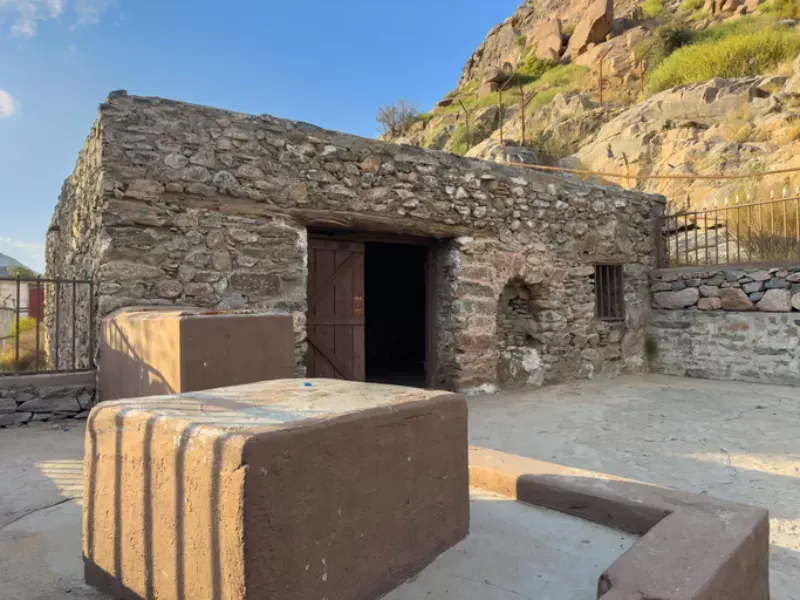
Nature, Scenery, and Local Life
The Sarawat Mountains cradle Taif within a natural amphitheater where diverse ecosystems flourish at extraordinary altitudes. This mountainous region presents visitors with a living laboratory of geological wonders, thriving wildlife populations, and agricultural practices that have adapted magnificently to the unique highland environment.
Al Shafa and Al Hada mountain views
Two towering sentinels dominate Taif's skyline—Al Shafa and Al Hada mountains—each offering distinct perspectives on the region's dramatic topography. Al Shafa Mountain commands attention at 2,500 meters above sea level, where visitors discover sweeping 360-degree vistas that stretch across multiple climate zones. Al Hada Mountain reaches approximately 2,000 meters, positioning itself as a natural demarcation line between the coastal Tihamah plains and the elevated Sarawat range.
Serpentine roadways such as Akabat Al-Kar and Akabat Al-Muhammadya wind through these peaks, revealing hidden treasures along their routes. Ancient stone villages appear to grow organically from the mountainsides, while diverse ecosystems shift from arid slopes to verdant valleys within mere kilometers. Even during peak summer periods, these elevated areas maintain refreshing temperatures between 15-20°C, creating microclimates that support unexpected biodiversity.
Wildlife and nature reserves
The Prince Saud Al-Faisal Center for Wildlife Research occupies a significant 35-square-kilometer tract of semi-desert habitat located 30 kilometers east of Taif. Since its establishment in 1986, this conservation facility has become a sanctuary for Arabia's most endangered species through carefully managed breeding programs.
The center's conservation efforts focus on several remarkable creatures:
- Arabian Oryx and Mountain Ibex populations
- Asian Houbara and Red-necked Ostrich species
- Wild rabbit colonies and various antelope varieties
Saiysad National Park provides another window into the region's natural heritage, drawing hikers and camping enthusiasts to its pristine wilderness areas. Meanwhile, the slopes of Al Hada host fascinating colonies of wild baboons that have become accustomed to human presence, creating unexpected wildlife viewing opportunities for visitors.
Fruit farms and rose plantations
Agricultural abundance reaches remarkable scales across Taif's terraced hillsides. The rose cultivation alone spans approximately 860 individual farms, generating around 500 million blooms annually. These operations stretch across 270 hectares of carefully tended land, nurturing roughly 1.14 million individual rose bushes throughout areas including Al-Hada, Al-Shifa, and Wadi Muharram.
The harvest period unfolds like a carefully choreographed seasonal celebration, lasting 35-45 days from late March into April. During this peak season, the entire landscape becomes awash in vibrant pink hues as each farm yields approximately 70,000 roses per day. Workers begin their laborious collection process before dawn and continue well into evening hours, timing their efforts to capture peak oil concentrations within the delicate petals.
Agricultural diversity extends far beyond roses, with Taif's fertile mountain soil supporting abundant crops of almonds, pomegranates, honey, apricots, and grapes. This agricultural richness establishes the region as a genuine treasure within Saudi Arabia's predominantly arid landscape.
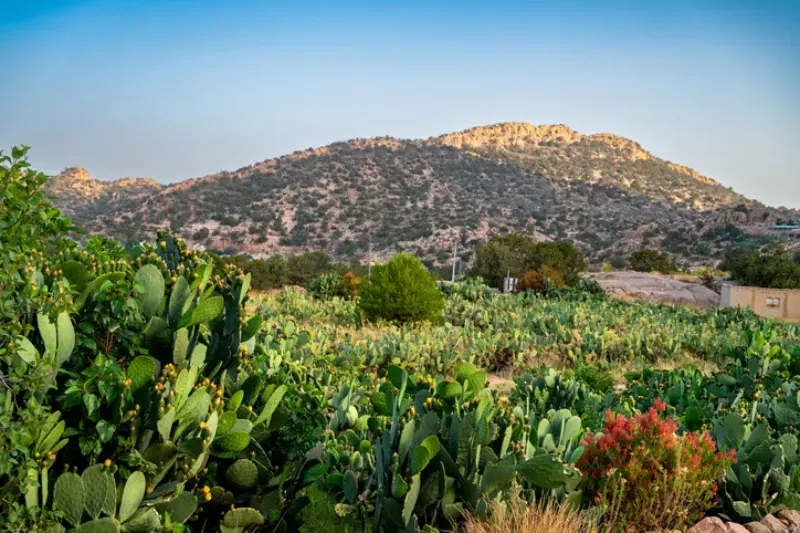
Customize Your Dream Vacation!
Get in touch with our local experts for an unforgettable journey.
Plan Your TripWhat to Do in Taif Today
Contemporary Taif presents visitors with remarkable accessibility through thoughtfully designed infrastructure that makes exploring this mountain sanctuary both convenient and memorable.
Taif travel guide: how to get in and around
The city's public transportation reveals impressive organizational sophistication. Taif's bus network deploys 58 modern vehicles equipped with comfort amenities and accessibility features for people with special needs. These buses maintain operations for 18 hours daily—from 5:30 AM through 11:30 PM—covering 9 principal routes with 184 strategically positioned stops across a total network distance of 293 kilometers. Taxi services and ride-sharing platforms like Uber and Careem provide additional mobility solutions for visitors seeking direct routes to specific destinations.
Taif International Airport sits approximately 28 kilometers from the city center, requiring roughly 25 minutes via taxi or dedicated airport shuttle service. This proximity ensures swift transitions from arrival to exploration.
Top things to do in Taif city
The region's attractions extend well beyond its famous agricultural heritage. The Shafa Mountains beckon nature enthusiasts with commanding vistas, while Al Wahbah crater presents a fascinating geological phenomenon. Families discover particular enjoyment at Arruddaf Park, where visitors can arrange rides on ponies, horses, or camels.
Agricultural tourism takes an unexpected turn at the Strawberry Farm, where seasonal picking experiences offer hands-on engagement with local cultivation practices. Cultural exploration continues at the Sharif Museum, housing an intriguing collection of vintage automobiles alongside traditional artifacts.
Cable car rides and tourist villages
The Taif Cable Cars (Telefric Al Hada) deliver an exhilarating mountain experience with spectacular elevated perspectives. This aerial journey originates at Jabal al Hada near the Ramada Al Hada Hotel before descending to Al Kar Tourist Village. The complete round-trip experience spans approximately 40 minutes, with tickets priced at around 84 SAR.
Al Kar Village at the lower terminal offers diverse recreational facilities:
- Water-based entertainment suitable for children and adults
- Paintball and laser tag arenas
- Car racing circuits and summer ski activities
Where to eat, shop, and stay
Taif's culinary landscape reflects remarkable diversity. Aylul Lebanon Restaurant serves authentic Lebanese specialties, while Kinara presents Indian cuisine, and Albaik offers its renowned fried chicken preparations. Traditional Saudi flavors await at Mabshoor Altaif and Althuaibi Restaurant.
Shopping venues range from Jouri Mall with its 236 retail establishments to Tera Mall's French-inspired architectural design. Taif Heart Mall distinguishes itself by housing the Middle East's largest skating rink. Traditional markets continue to offer handicrafts and locally-made souvenirs.
Accommodation options span from luxury mountain-view stays at Intercontinental Taif to budget-conscious alternatives like Swiss Spirit Hotel & Suites and Remaj Hotel. Each category provides distinct advantages for different travel preferences and requirements.
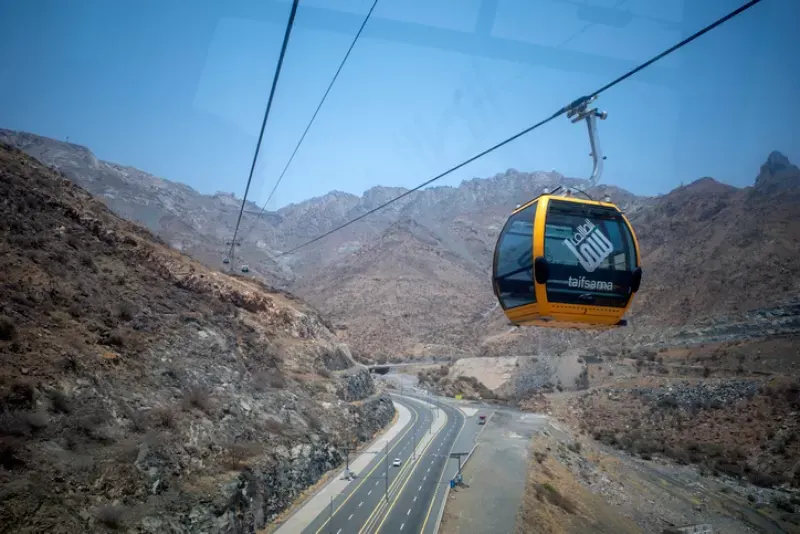
Conclusion
Taif reveals itself as an extraordinary tapestry where Arabia's diverse elements weave together in remarkable harmony. The mountain city demonstrates how geographical elevation can create an entirely different world within a single kingdom—one where cool breezes replace desert winds and where ancient cultural practices flourish alongside modern infrastructure.
The sensory journey through Taif's rose-scented valleys offers insights into agricultural traditions that span centuries, while the cultural depth found within its museums and festivals illuminates the intellectual heritage that shaped Arabian civilization. These experiences, combined with the dramatic mountain landscapes and conservation initiatives, create a multifaceted destination that challenges conventional perceptions of Saudi Arabian geography.
Each element of Taif contributes to a larger understanding of how tradition adapts and thrives in changing times. The cable car systems provide modern access to ancient vistas, while traditional dances continue to captivate audiences in contemporary settings. This seamless integration of old and new reflects a community that values its past while embracing practical progress.
The city's distinction as both an agricultural powerhouse and a cultural center positions it uniquely within the kingdom's landscape. Visitors depart with expanded knowledge of Saudi Arabia's geographic diversity, cultural richness, and the remarkable ways communities have adapted to their mountainous environment over generations.
Taif stands as compelling evidence that discovery rewards those who venture beyond familiar territories. The elevation that defines this mountain city extends far beyond mere altitude—it represents an elevated understanding of how geography, culture, and human ingenuity combine to create something truly distinctive within the Arabian Peninsula.
FAQs
Q1. What makes Taif unique among Saudi Arabian cities?
Taif is known as the "City of Roses" due to its extensive rose farms, producing over 300 million flowers annually. It's also Saudi Arabia's unofficial summer capital, offering a cool mountain climate and stunning natural scenery.
Q2. What cultural attractions can visitors experience in Taif?
Visitors can explore the historic Souq Okaz, witness traditional Majrour dances, and visit museums like Shubra Palace. The city is also known for its rich poetic heritage and was named the "Capital of Arabic Poetry" in 2022.
Q3. What outdoor activities are available in Taif?
Taif offers breathtaking mountain views from Al Shafa and Al Hada, wildlife viewing at the Prince Saud Al-Faisal Center, and exciting cable car rides. Visitors can also enjoy hiking, camping, and exploring fruit farms and rose plantations.
Q4. Is Taif accessible for non-Muslim visitors?
Yes, Taif is accessible to non-Muslim visitors. However, it's important to note that non-Muslims should not attempt to travel to Taif via Mecca, as entry to Mecca is forbidden for non-Muslims under Saudi law.
Q5. What are some popular shopping experiences in Taif?
Taif offers diverse shopping options, from modern malls like Jouri Mall and Taif Heart Mall to traditional markets selling handicrafts and local souvenirs. The city is particularly known for its aromatic rose products, perfumes, and locally produced goods.




